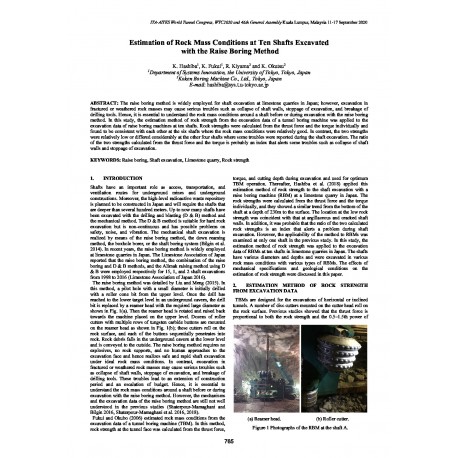Cart
0
0
No document
0,00 €
Total
Document successfully added to your shopping cart
Quantity
Total
There are 0 items in your cart.
There is 1 item in your cart.
Total documents
Total shipping
To be determined
Total
Search & filter
Search for a publication
Search & filter
Estimation of Rock Mass Conditions at Ten Shafts Excavated with the Raise Boring Method
id283
K. Hashiba / K. Fukui / R. Kiyama / K. Okutsu
The raise boring method is widely employed for shaft excavation at limestone quarries in Japan; however, excavation in fractured or weathered rock masses may cause serious troubles such as collapse of shaft walls, stoppage of excavation, and breakage of drilling tools. Hence, it is essential to understand the rock mass conditions around a shaft before or during excavation with the raise boring method. In this study, the estimation method of rock strength from the excavation data of a tunnel boring machine was applied to the excavation data of raise boring machines at ten shafts. Rock strengths were calculated from the thrust force and the torque individually and found to be consistent with each other at the six shafts where the rock mass conditions were relatively good. In contrast, the two strengths were relatively low or differed considerably at the other four shafts where some troubles were reported during the shaft excavation. The ratio of the two strengths calculated from the thrust force and the torque is probably an index that alerts some troubles such as collapse of shaft walls and stoppage of excavation.




